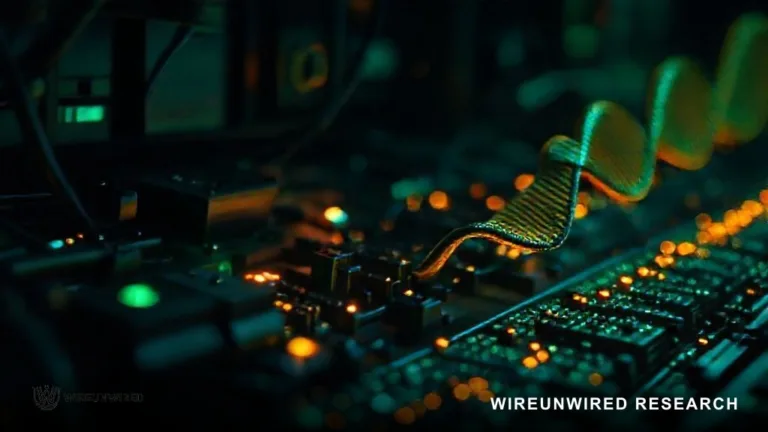Key Insights
- China suspends rare earth export controls and ends probes into U.S. semiconductor firms under major trade pact.
- U.S. to pause tariffs, cancel planned 100% levy on Chinese goods, aiming to stabilize global semiconductor supply chains.
- Deal signals easing trade tensions, boosting market confidence and access to critical materials like gallium and graphite.
China’s Rare Earth Export Curbs Lifted: A Turning Point for Global Trade
Earlier on WireUnwired Research, we examined how China’s export restrictions on rare earth metals sent shockwaves through global technology markets, leaving semiconductor supply chains on edge. Today, in a dramatic new development, those very dynamics have shifted.
China has taken a decisive step to ease global trade tensions by agreeing to suspend export controls on rare earth elements and halt ongoing investigations into U.S. semiconductor companies. This move, announced on November 03, 2025, is the cornerstone of a new trade pact forged between Beijing and Washington. The agreement comes after months of high-stakes negotiations aimed at de-escalating a trade standoff that had threatened to destabilize global supply chains for semiconductors and critical materials.
What Changed? China will now issue general export licenses for rare earths, gallium, germanium, antimony, and graphite—rolling back restrictions implemented in April 2025 and October 2022. In exchange, the United States will pause several tariffs and scrap a planned 100% levy on a range of Chinese imports. Industry analysts say this mutual compromise is set to restore smoother flows of vital resources for chip manufacturing and electronics.
Impact on Semiconductor Supply Chains and Global Markets

Semiconductor firms and electronics manufacturers had been grappling with cost spikes and supply uncertainties amid China’s curbs on rare earths and related materials. Rare earths like neodymium and dysprosium are essential for chip production, magnets, and batteries. Gallium and graphite play critical roles in advanced semiconductors and energy storage devices.
Market Reaction The announcement sparked immediate optimism across global financial markets. According to Trading Economics, stock indices in East Asia and North America rose on news of the deal, reflecting expectations of improved supply chain stability. Social media and financial forums buzzed with positive sentiment, with experts highlighting potential reductions in manufacturing costs and improved access to strategic materials. However, some commentators remain cautious about long-term enforcement and the possibility of future trade disputes.
Broader Geopolitical Implications
The rare earth pact is more than just an economic arrangement—it marks a significant thaw in U.S.-China relations. By agreeing to end investigations into U.S. semiconductor firms, China signals a willingness to reduce regulatory pressure and support global industry collaboration. Meanwhile, the U.S. rollback of tariffs is expected to benefit American manufacturers and consumers, who have faced higher prices due to trade barriers.
“This deal represents a pragmatic step forward. Both sides are prioritizing stability and predictability over escalation, which is vital for the global tech ecosystem.” — Industry Analyst, November 03, 2025
East Asian and North American business media have given the agreement prominent coverage, with outlets like The Japan Times detailing the specifics of the pact and its expected ripple effects. No exclusive regional-only reporting was detected, underscoring the global significance of the development.
You Would Love to read :How Semiconductor Trends and Geopolitics Reshoring Are Driving Market Growth in 2025?
What’s Next for Semiconductor Manufacturing?
With the resumption of rare earth exports and the lifting of regulatory probes, semiconductor producers are poised to regain momentum. The pact is expected to lower costs, reduce geopolitical risks, and encourage cross-border investment in high-tech sectors.
- Supply Chain Stability: Manufacturers can plan production with greater certainty, helping to avoid costly disruptions.
- Market Access: U.S. and global firms will regain easier access to strategic minerals, supporting innovation.
- Consumer Impact: Lower input costs could eventually translate to more affordable electronics and green technologies.
Yet, industry watchers caution that enforcement and future negotiations remain critical. The pact’s success will depend on both sides honoring their commitments and maintaining open dialogue.
For ongoing updates and expert discussion, join our WhatsApp group WireUnwired Research or connect with our LinkedIn community WireUnwired Research.
Discover more from WireUnwired Research
Subscribe to get the latest posts sent to your email.



